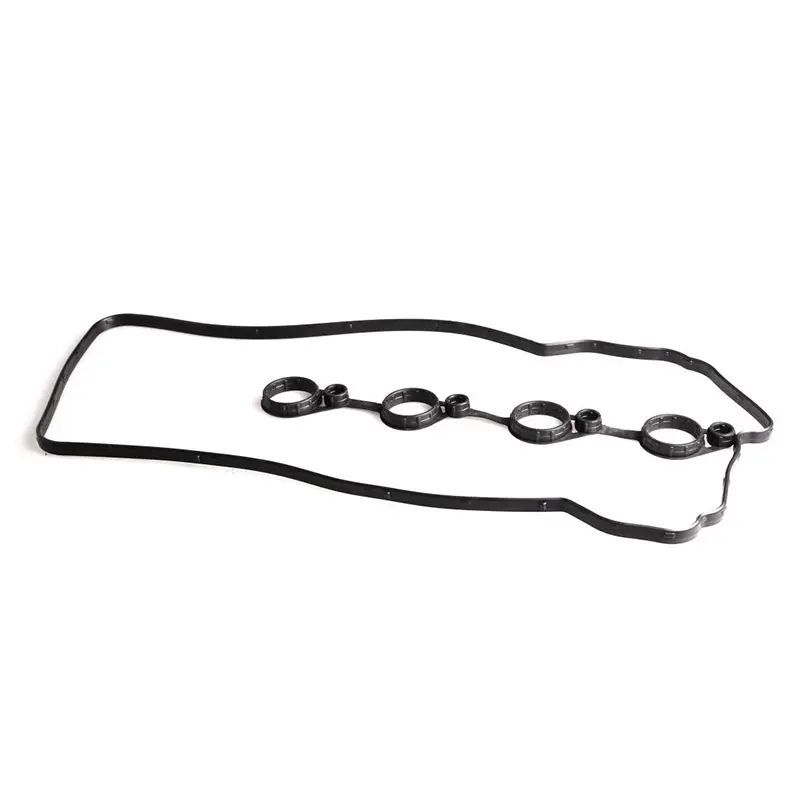9 月 . 30, 2024 16:55 Back to list
Replacement and Maintenance Tips for Valve Cover Gasket in Your Vehicle
Understanding Valve Cover Gaskets Importance, Function, and Replacement
The valve cover gasket is a crucial component in modern engine designs, playing a vital role in maintaining engine performance and integrity. This rubber or silicone seal serves as a barrier between the engine's valve cover and the cylinder head, preventing oil leaks and contamination. Understanding the importance and function of the valve cover gasket, as well as recognizing the signs of wear and how to replace it, is essential for any vehicle owner or enthusiast.
The Importance of the Valve Cover Gasket
The main purpose of the valve cover gasket is to seal the gap between the valve cover and the engine itself. The valve cover houses critical components such as the camshaft, rocker arms, and various other parts involved in the engine's operation. The gasket ensures that oil, which lubricates these moving parts, remains contained within the engine. Without a proper seal, oil can leak out, leading to several potential issues.
An oil leak can cause low oil levels, which increases engine wear and can lead to severe damage over time. Additionally, the oil can mix with dirt and debris from the outside environment, causing contamination that can affect engine performance. In some cases, oil can find its way into the combustion chamber, resulting in increased emissions and engine misfires.
Signs of a Failing Valve Cover Gasket
As with any engine component, the valve cover gasket can wear out over time due to factors such as heat, oil exposure, and age. Recognizing the signs of a failing valve cover gasket is crucial for preventing more extensive damage. Some common symptoms of a leak include
1. Oil Spots One of the most noticeable signs of a failing gasket is oil puddles or spots under the vehicle. If you notice oil on your driveway or garage floor, it may indicate a valve cover gasket leak.
2. Burning Oil Smell When engine oil leaks onto hot engine components, such as the exhaust manifold, it can create a burning smell. This can be a serious concern, as it may pose a fire hazard.
3. Engine Noise A leaking gasket can lead to reduced oil pressure, which in turn can result in increased engine noise. If you hear unusual sounds coming from the engine, it may be time to check the gasket.
valve cover gasket

4. Visual Inspection A simple visual check can reveal oil seeping or pooling around the edges of the valve cover. If the gasket appears cracked or worn, it needs to be replaced.
Replacing the Valve Cover Gasket
Replacing a valve cover gasket is a maintenance task that many DIY-friendly individuals can tackle with the right tools and guidance. Here’s a general overview of the steps involved
1. Gather Tools and Materials You will need a new gasket, a socket set, torque wrench, and possibly a gasket scraper for cleaning. Make sure you have your vehicle’s service manual for specific torque specifications.
2. Remove the Valve Cover Begin by disconnecting the battery and removing any components obstructing access to the valve cover. This may include ignition coils, air intake hoses, and wiring harnesses. Carefully unbolt the valve cover using the socket set.
3. Clean the Surface Once the cover is removed, use a gasket scraper to clean off any old gasket material from the valve cover and cylinder head surfaces. This ensures a good seal with the new gasket.
4. Install the New Gasket Place the new valve cover gasket onto the valve cover, ensuring it fits correctly into the grooves. Reattach the valve cover, torquing the bolts to the manufacturer’s specifications to ensure an even seal.
5. Reassemble Components Reinstall any components that were removed to access the valve cover, reconnect the battery, and check for leaks after starting the engine.
Conclusion
The valve cover gasket may not be the most glamorous component of an engine, but its role is undeniably critical. Regular maintenance and prompt attention to leaks can save vehicle owners from more significant and costly repairs down the line. By understanding the function of the valve cover gasket and being aware of the signs of wear, you can keep your engine running smoothly and efficiently for years to come.